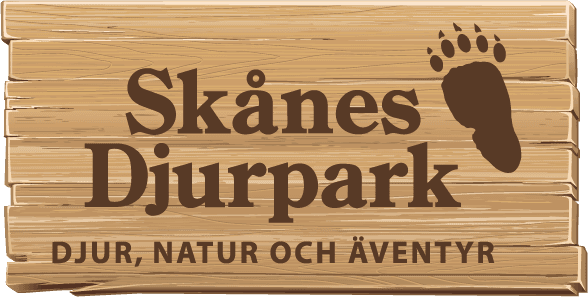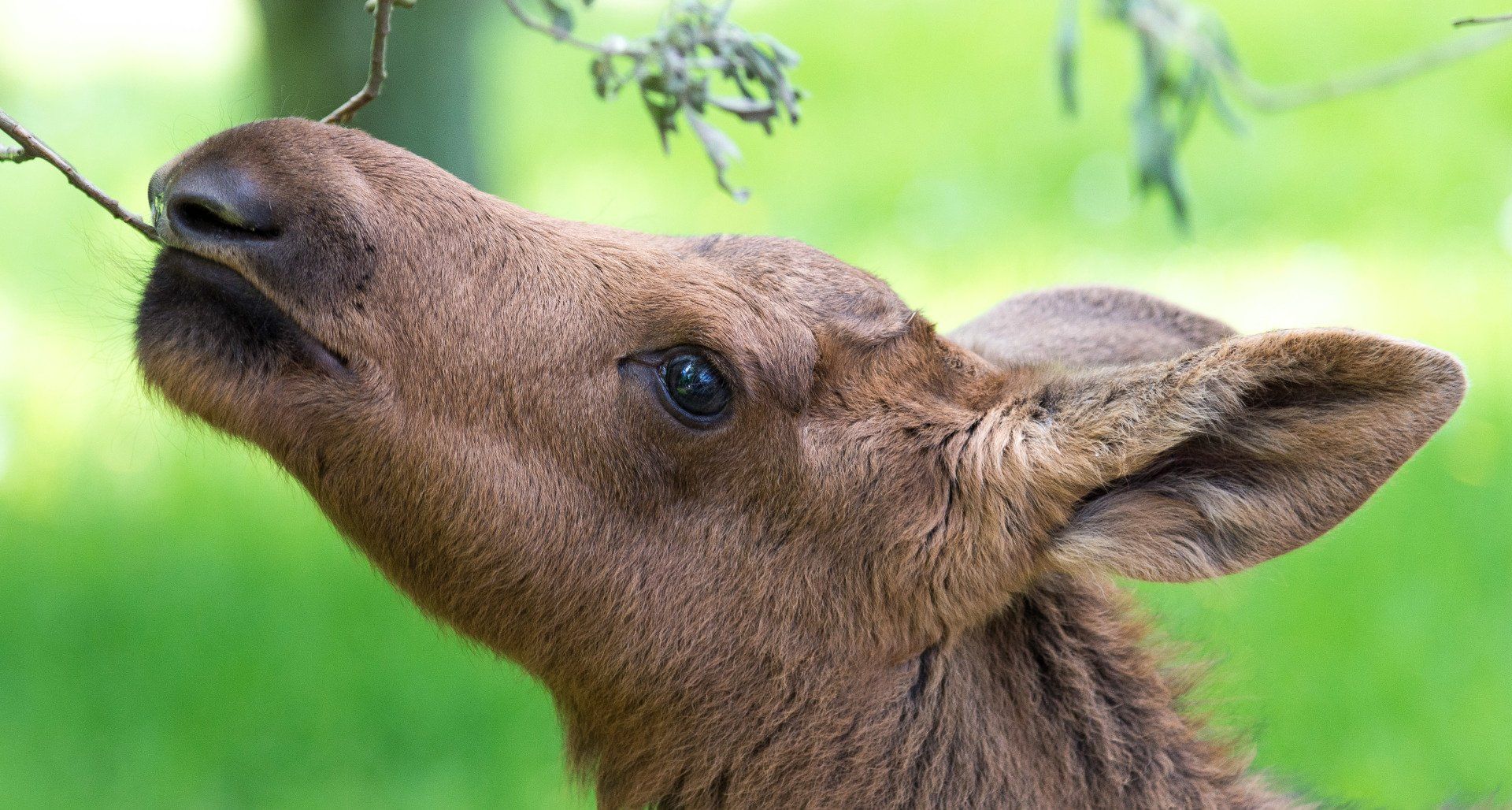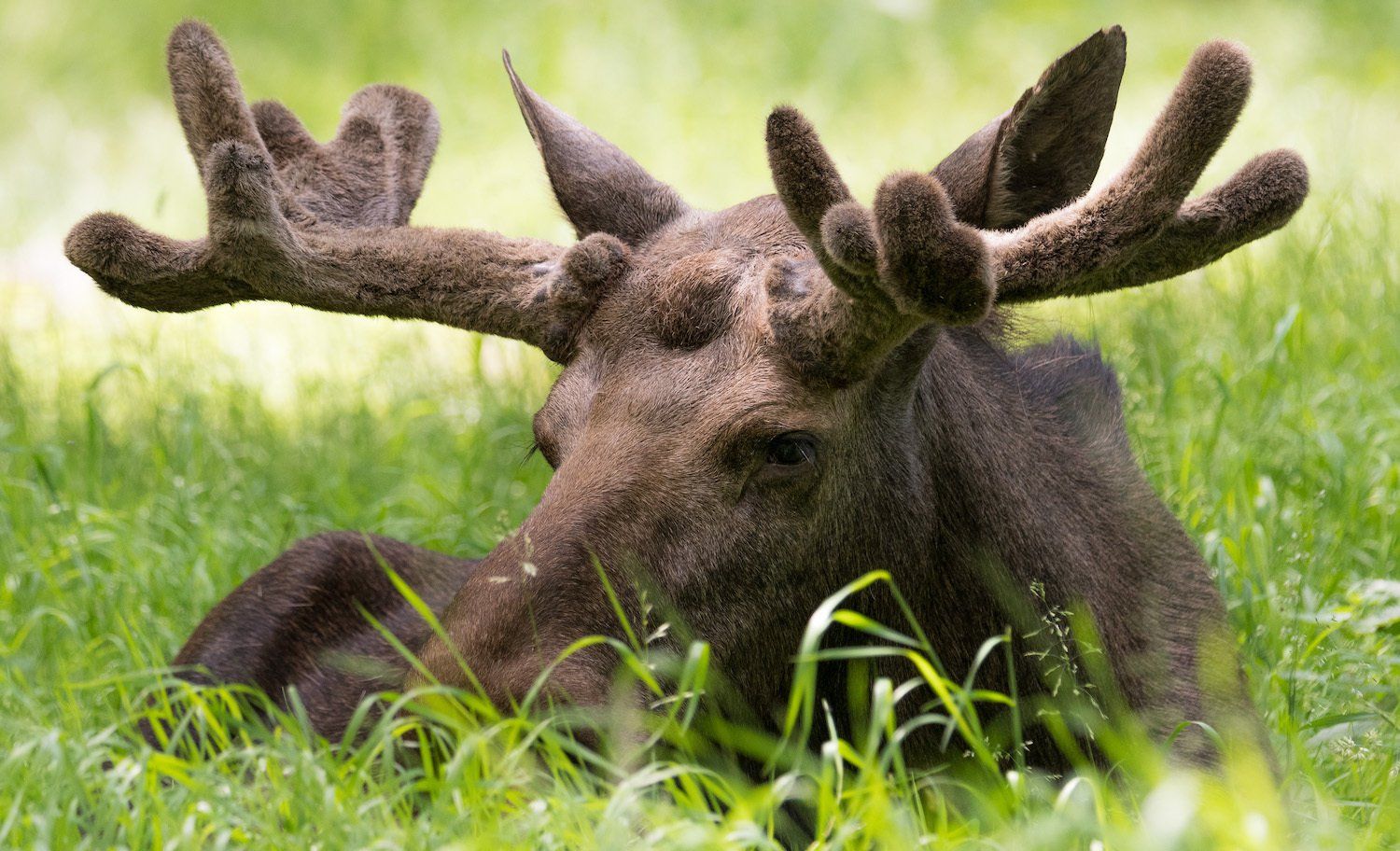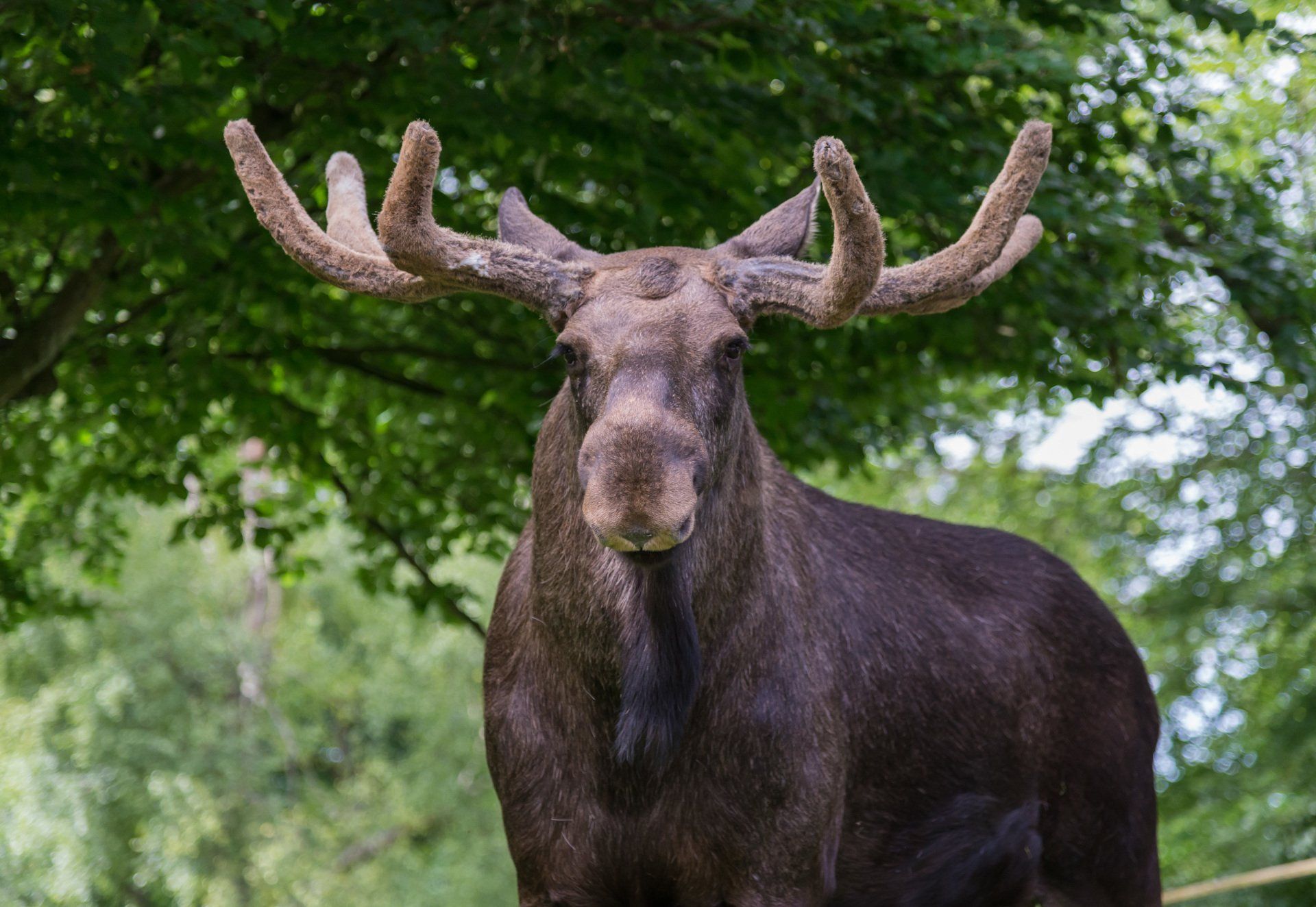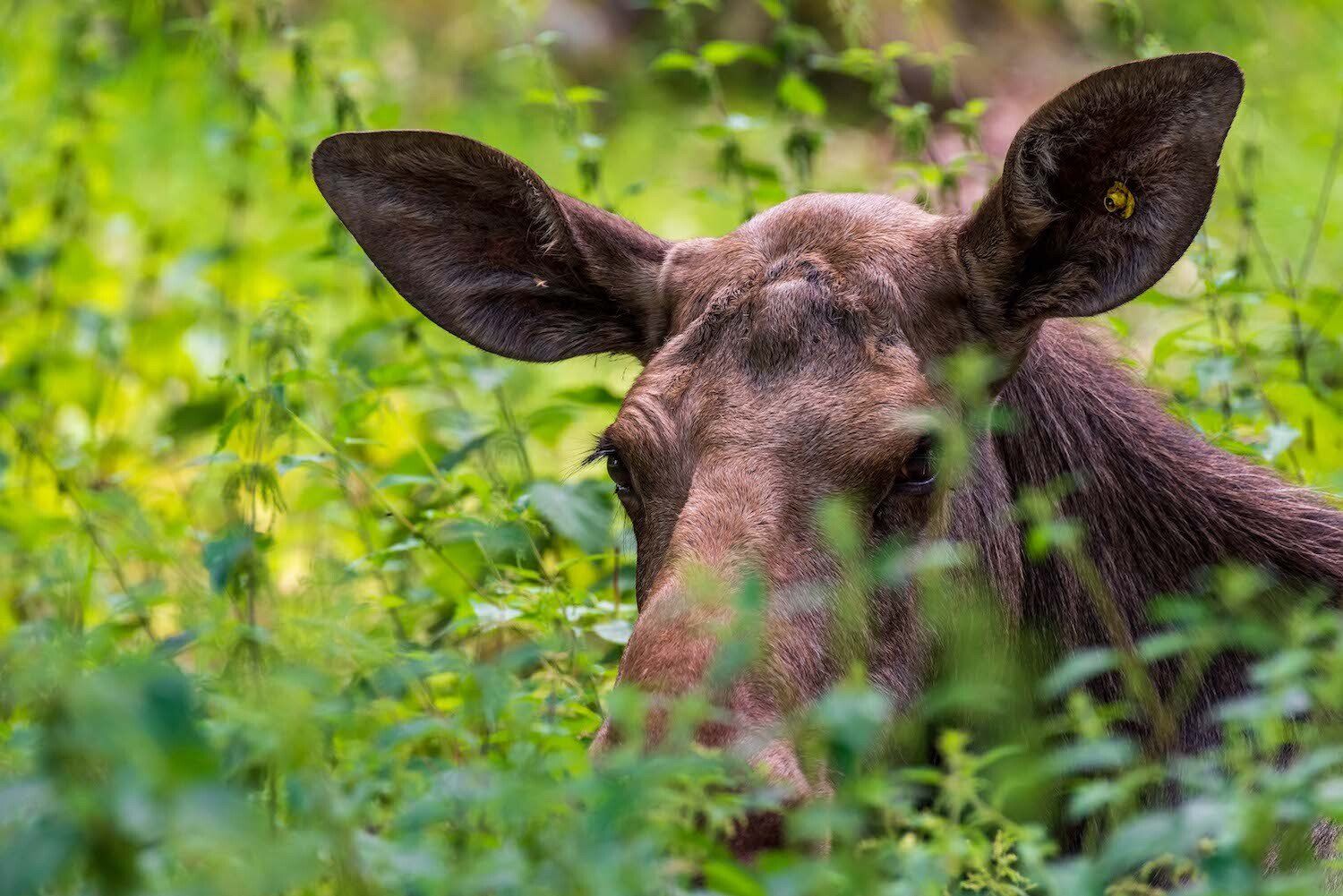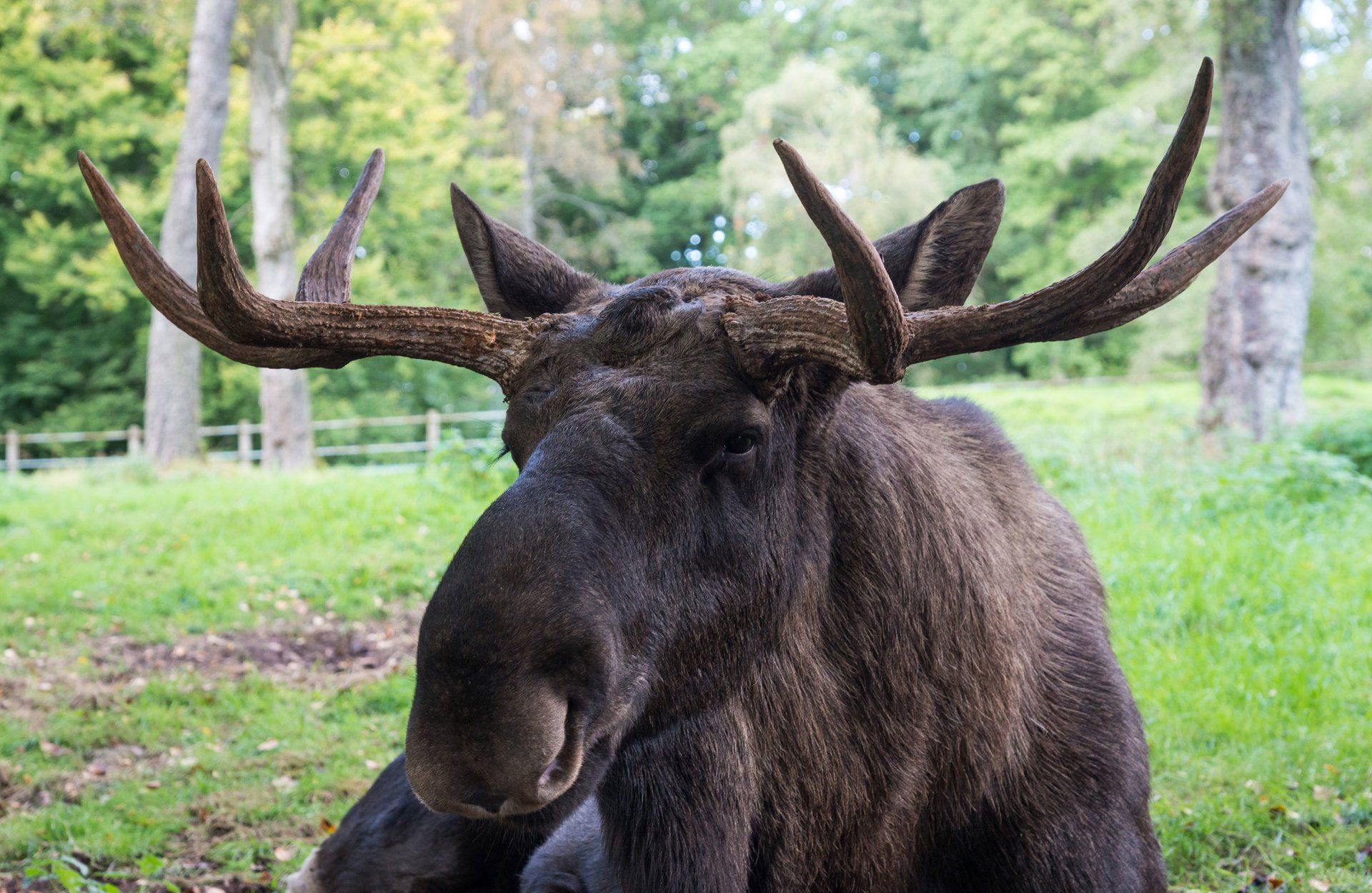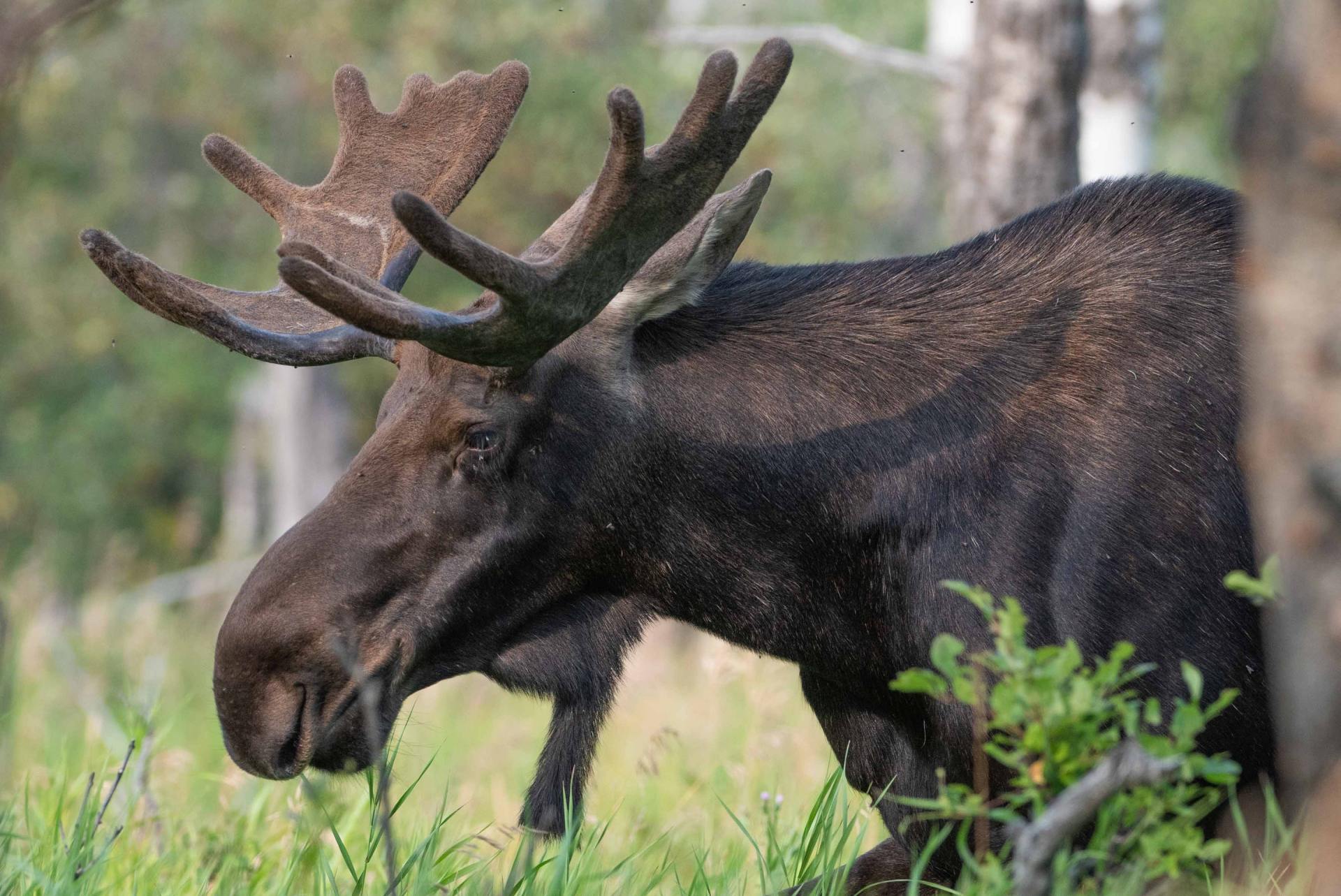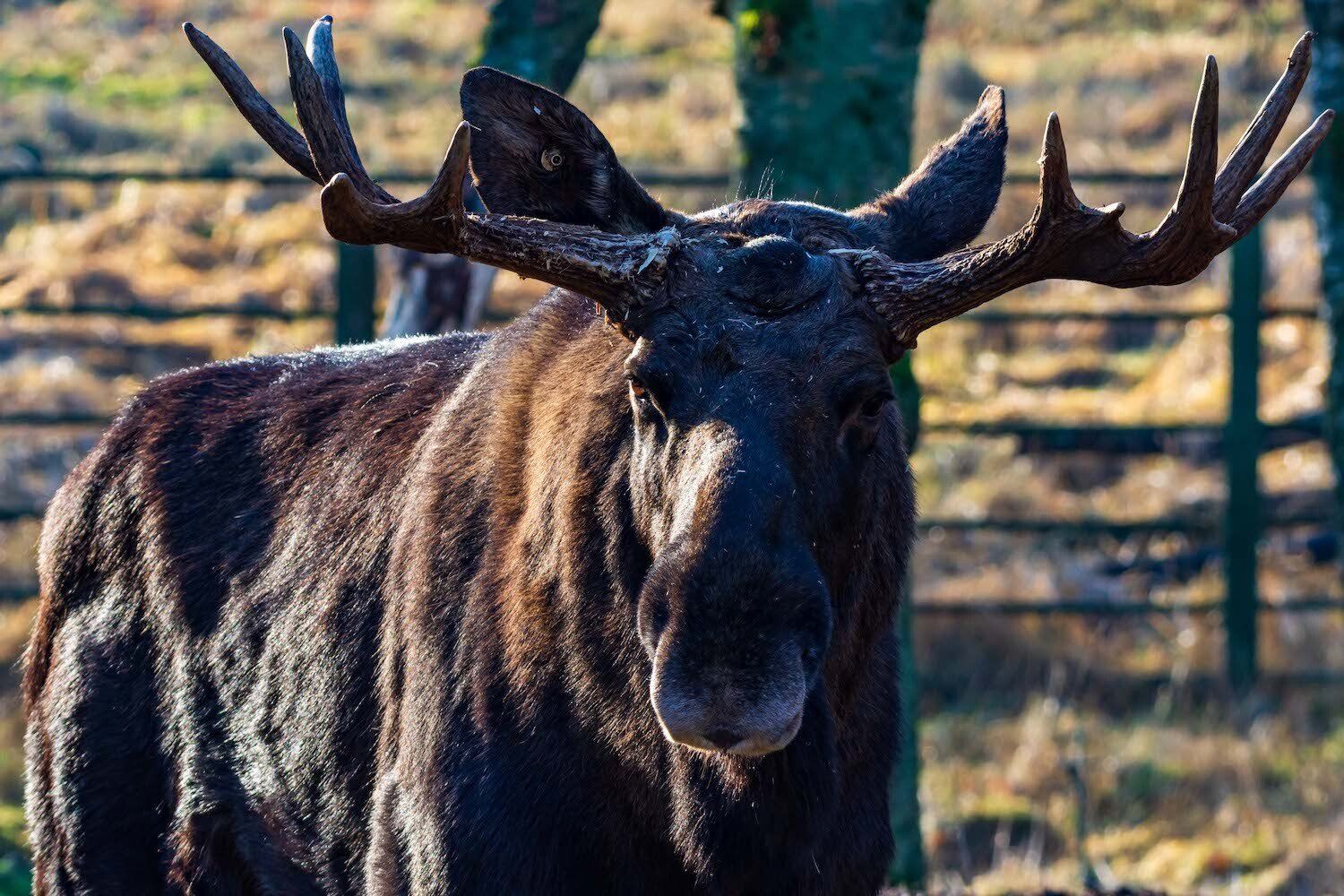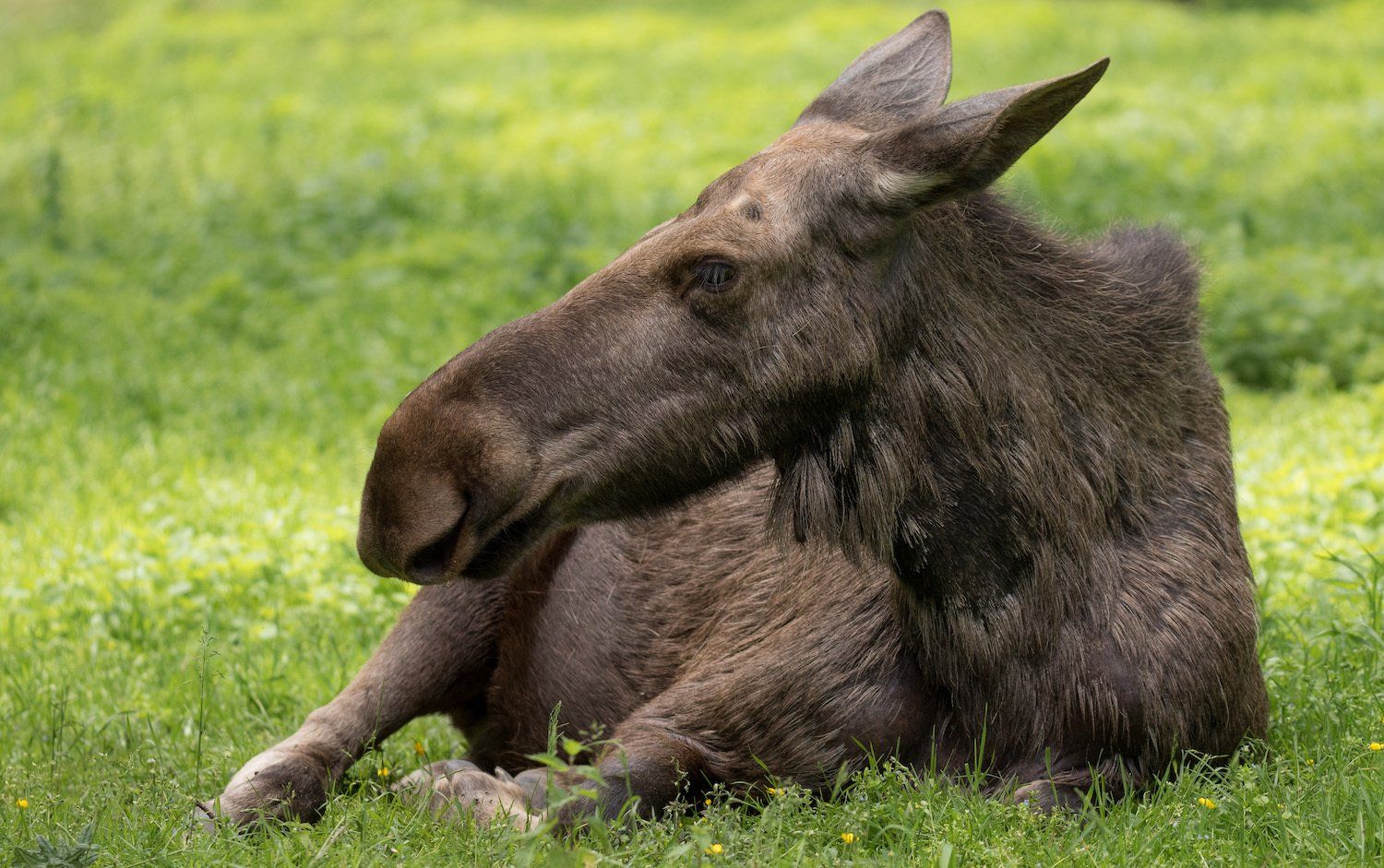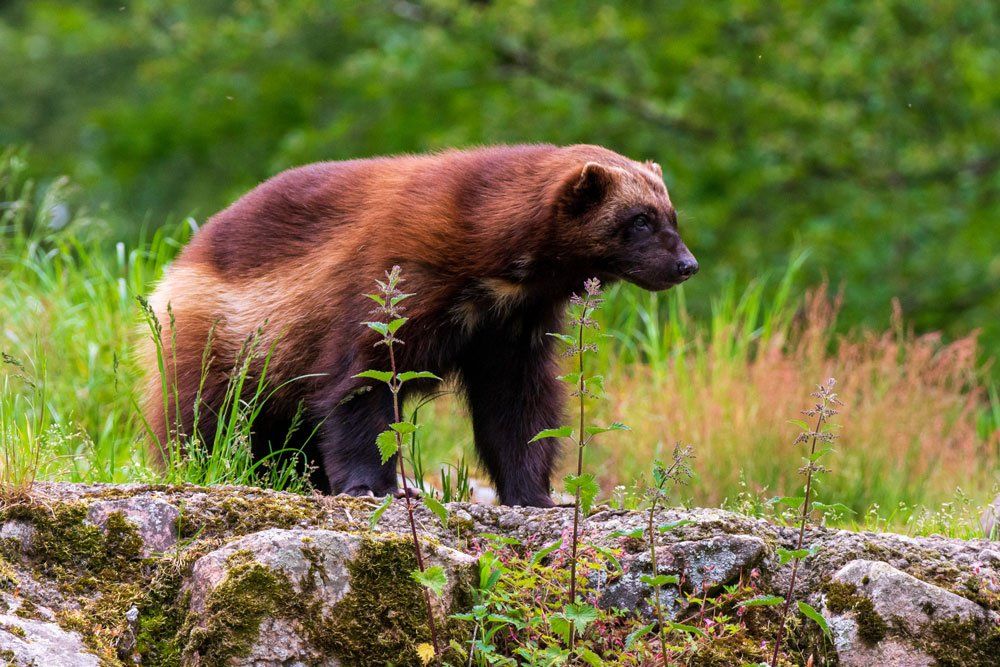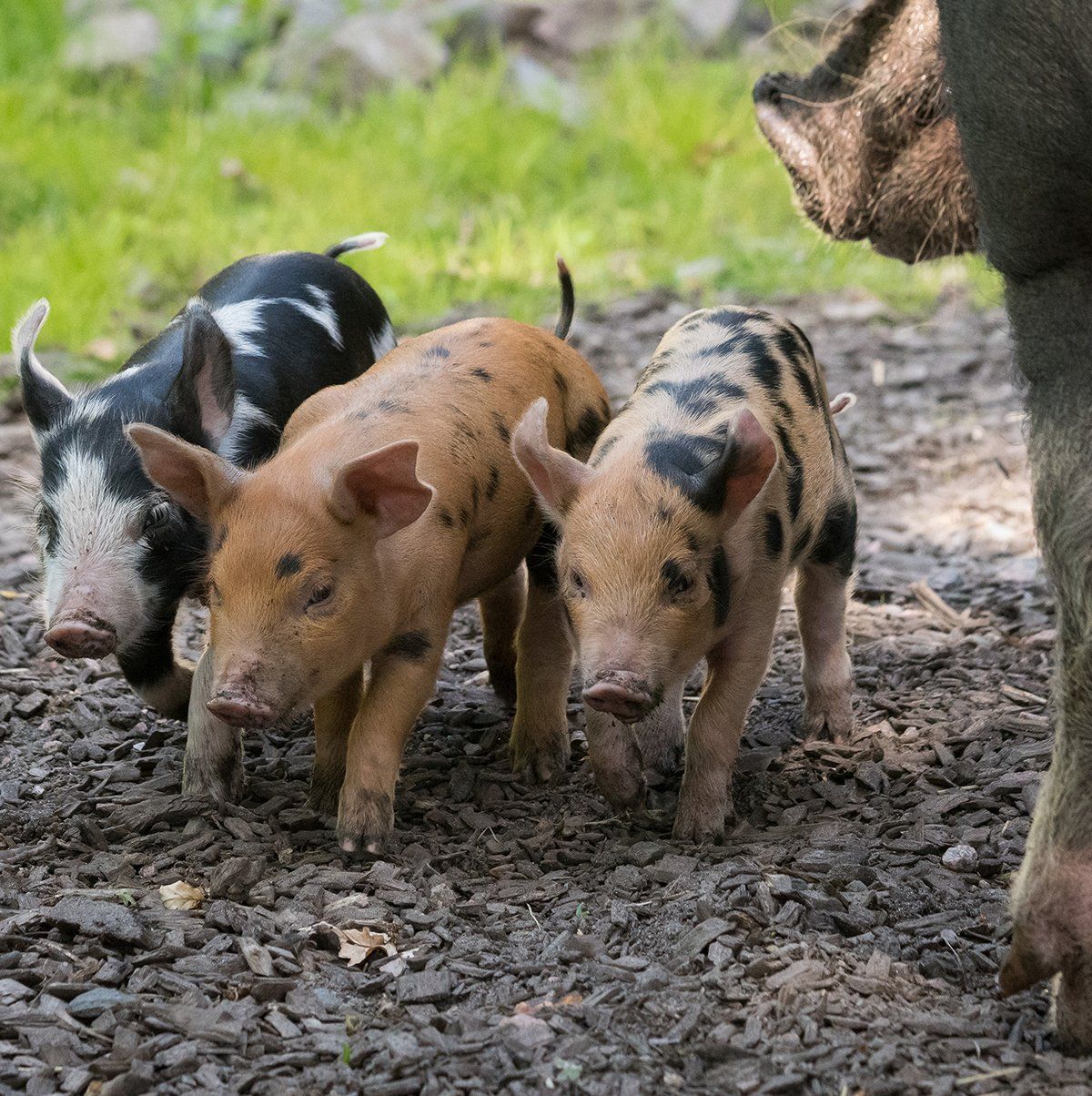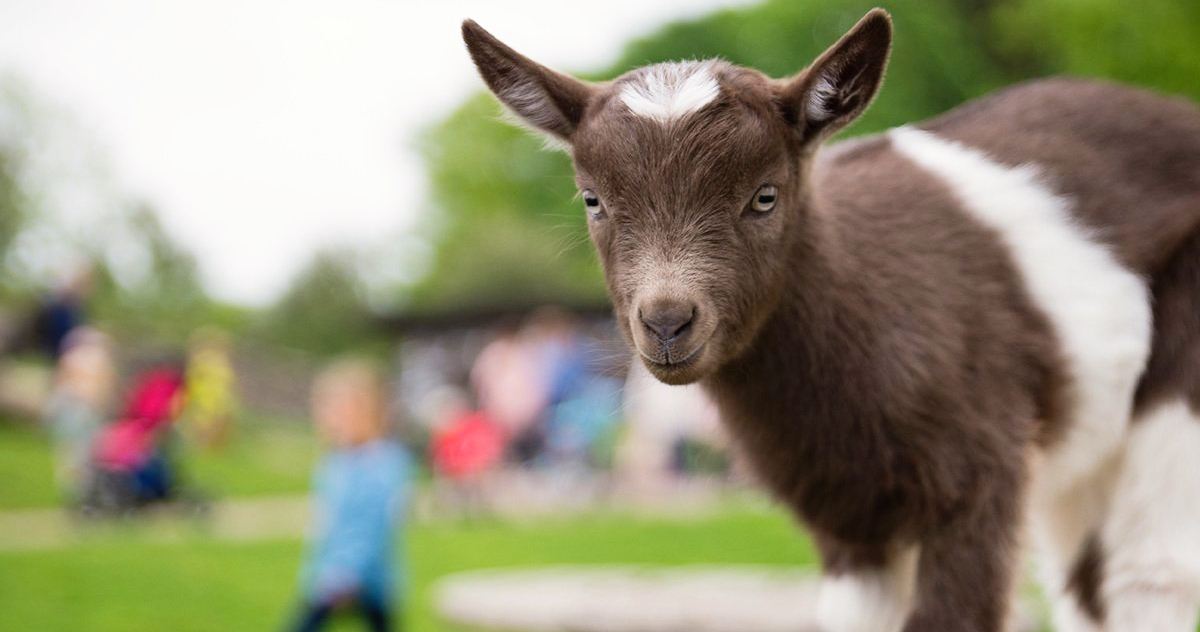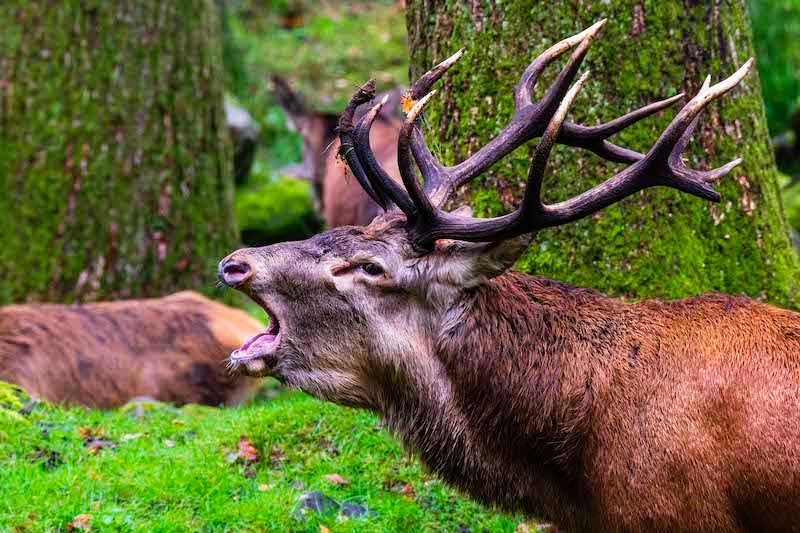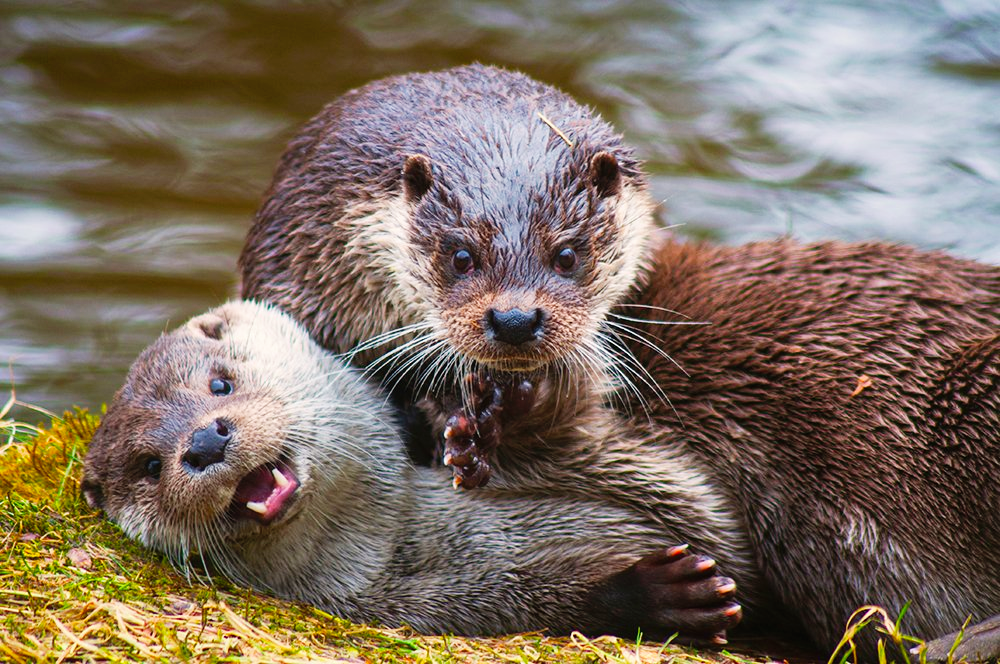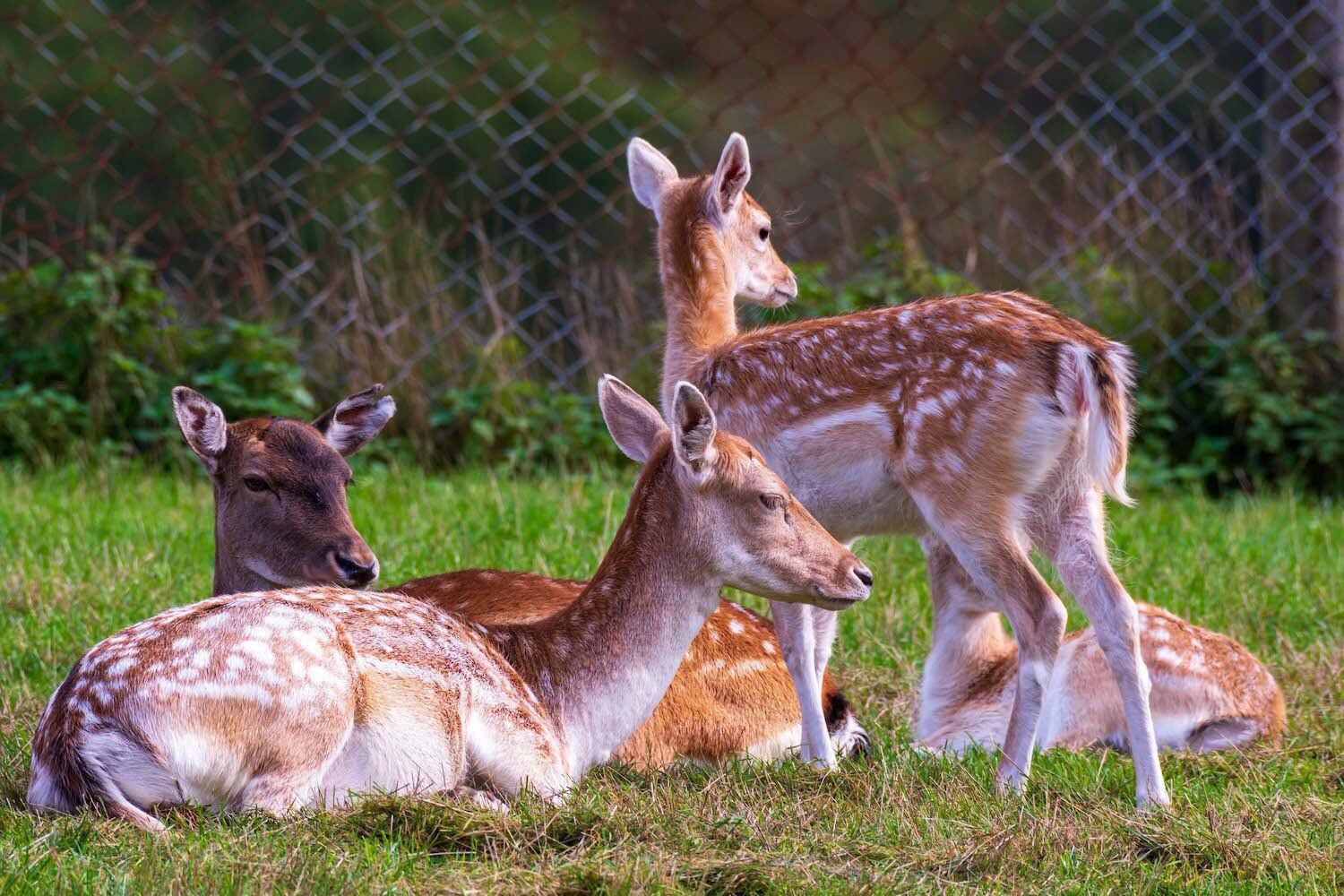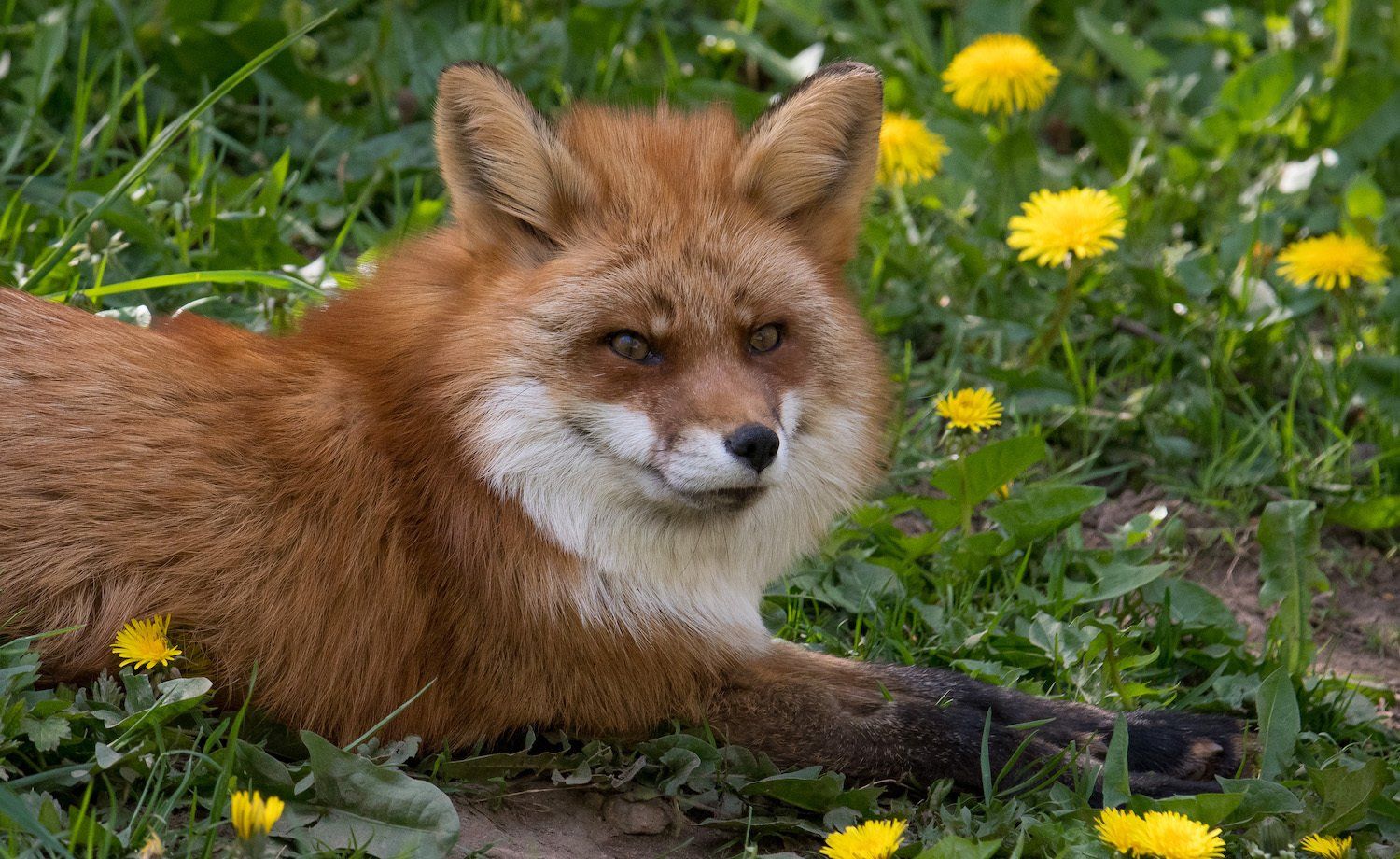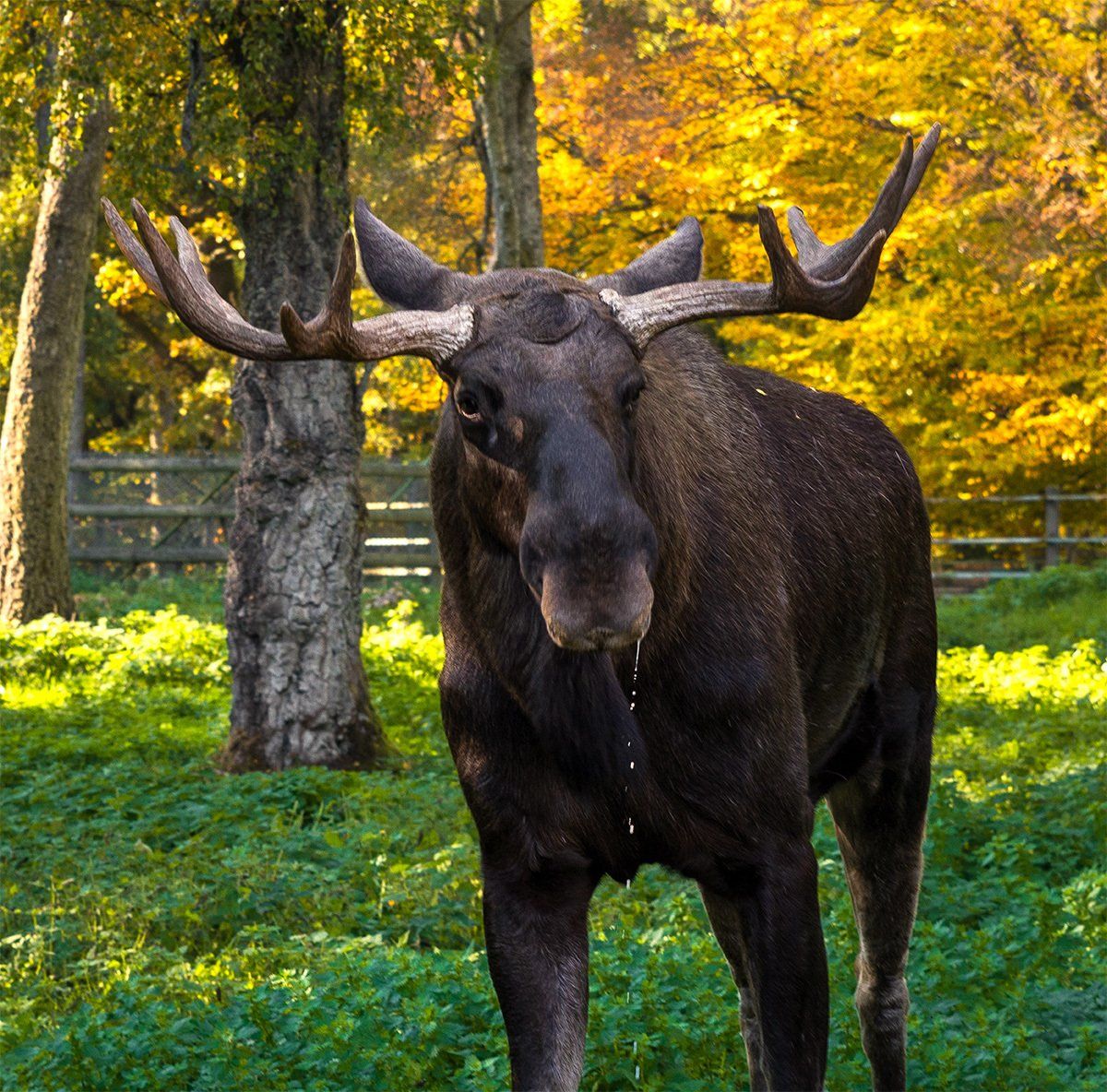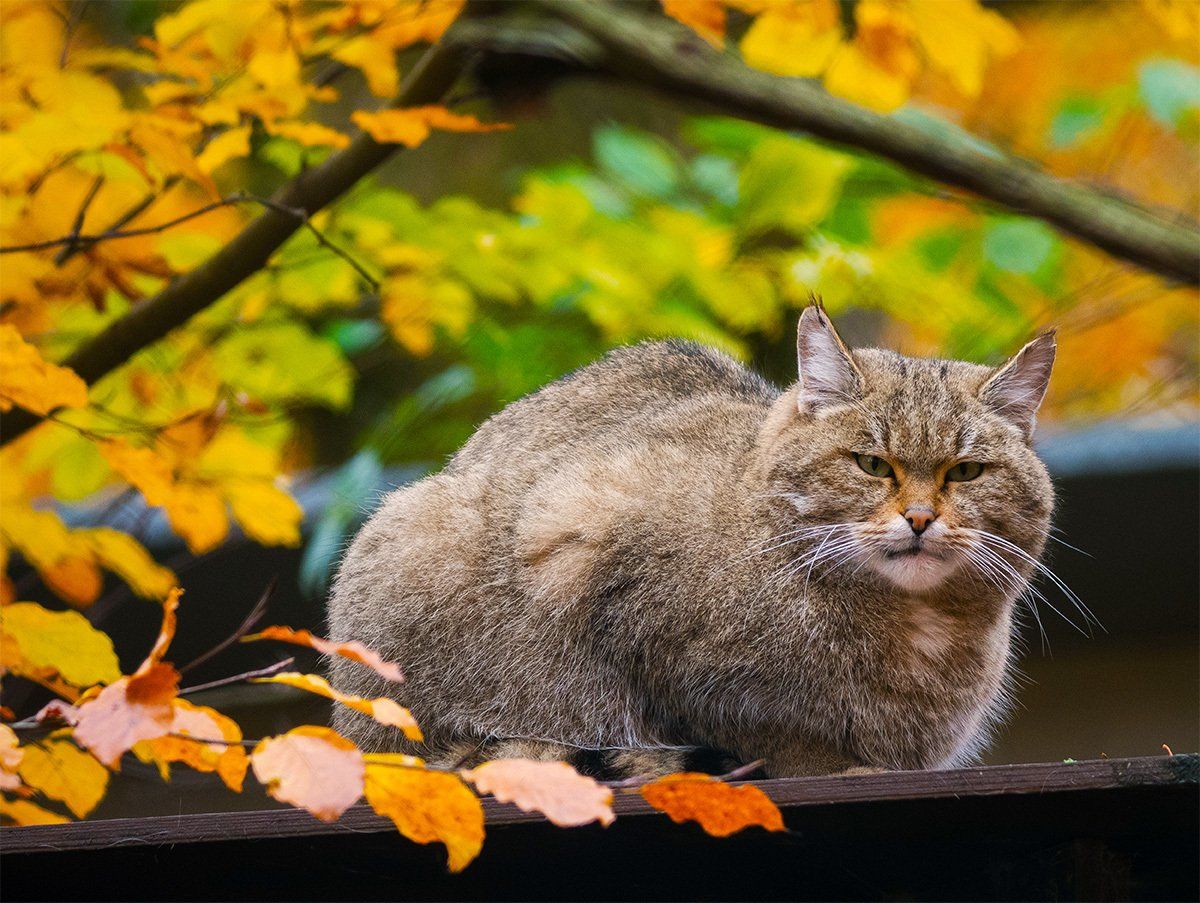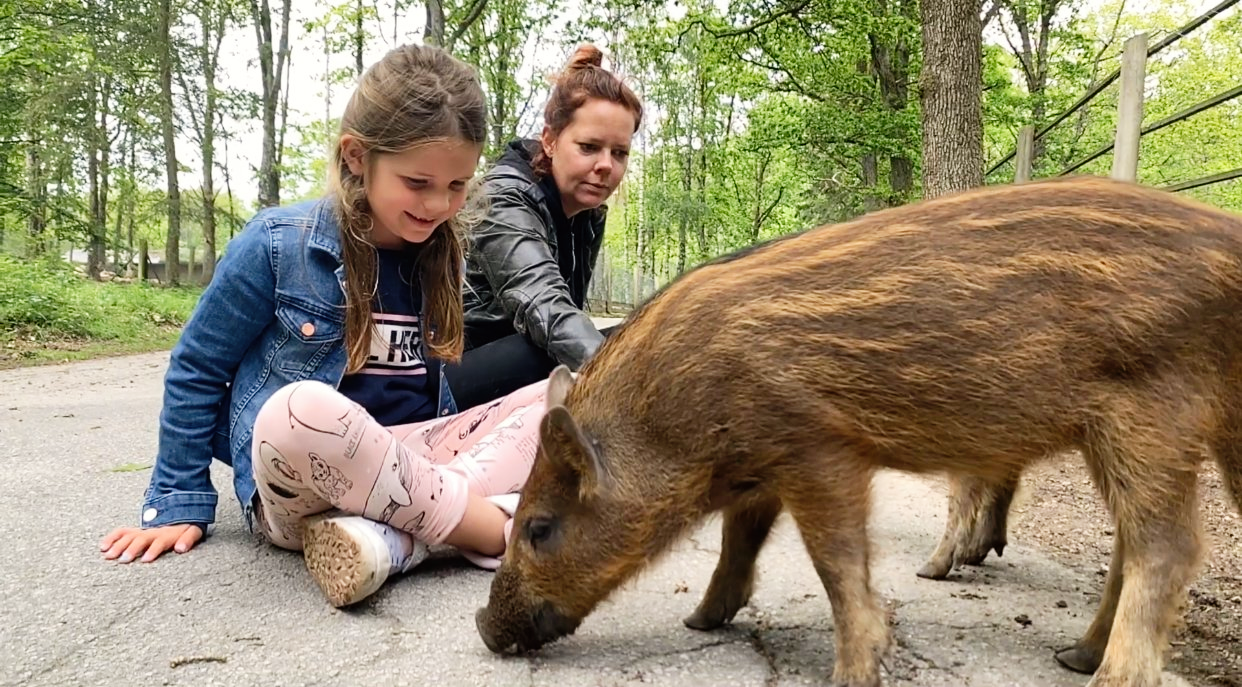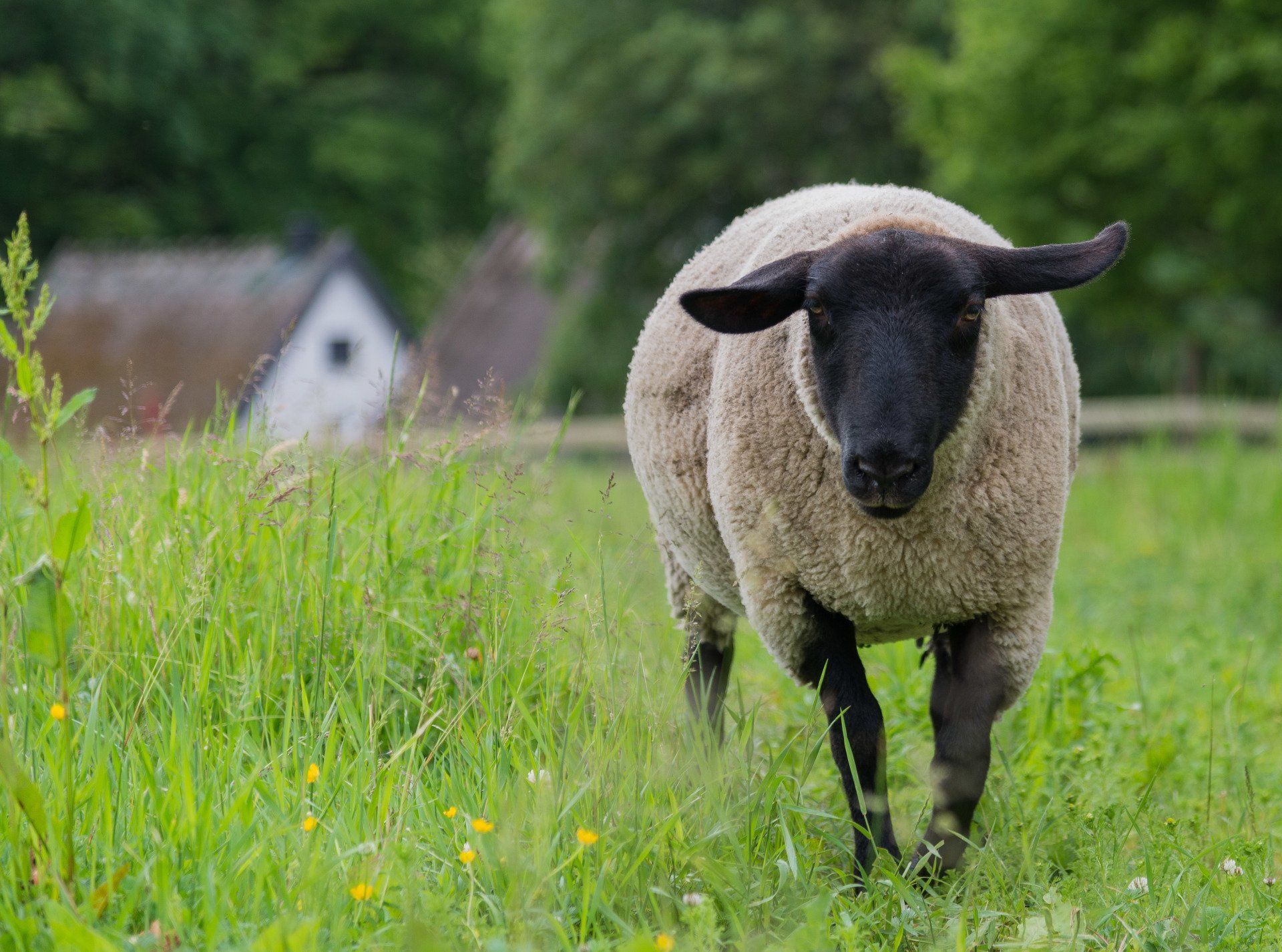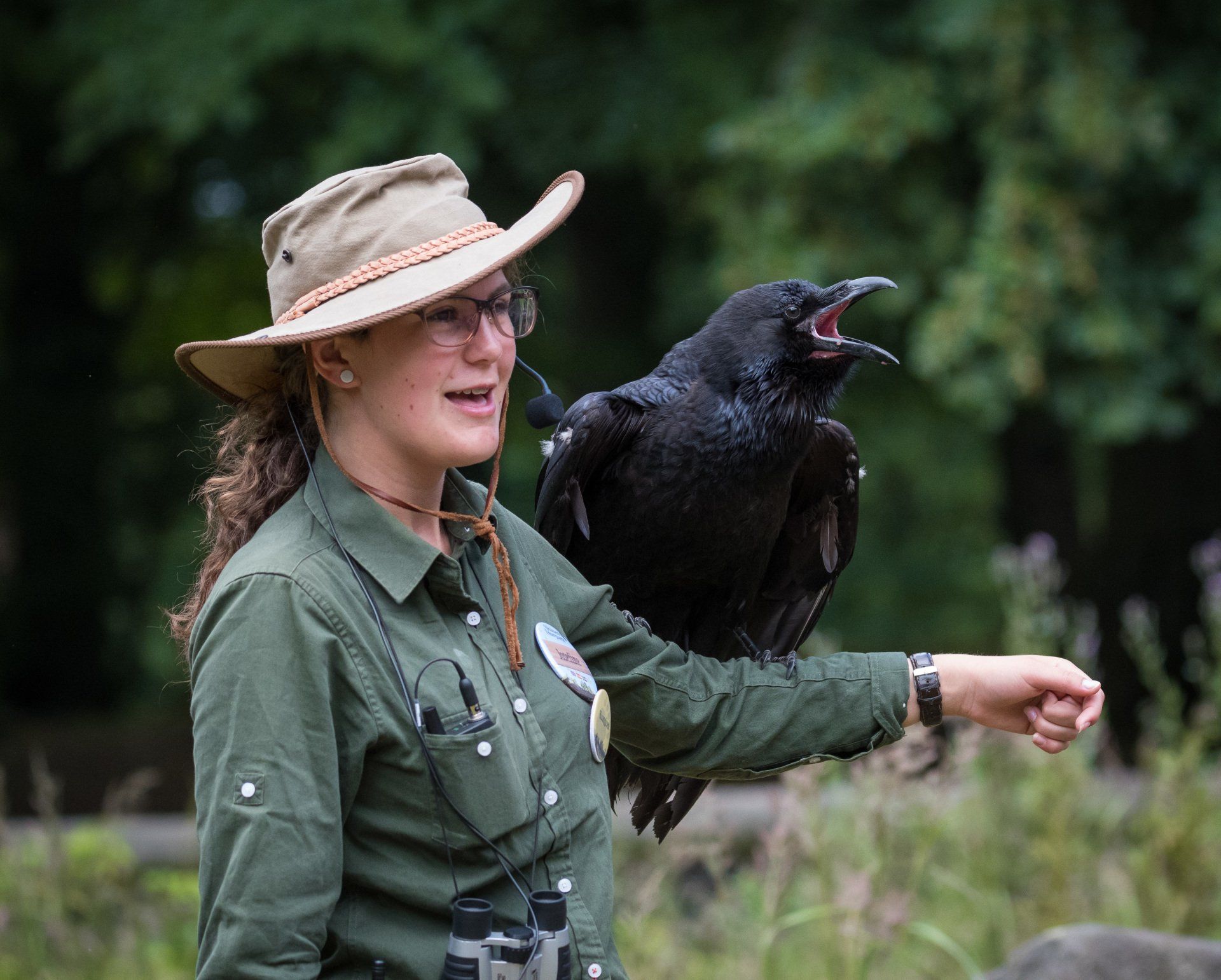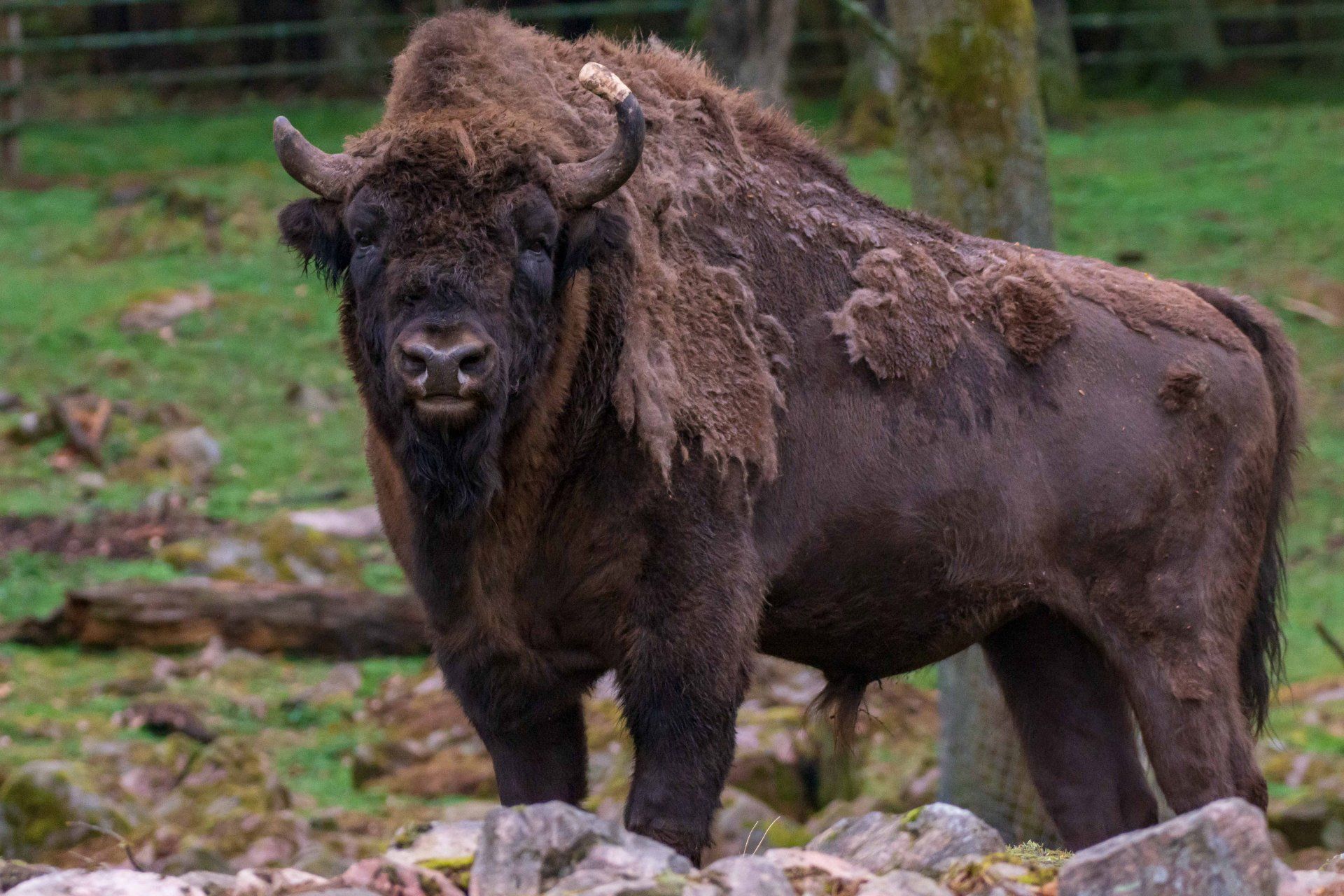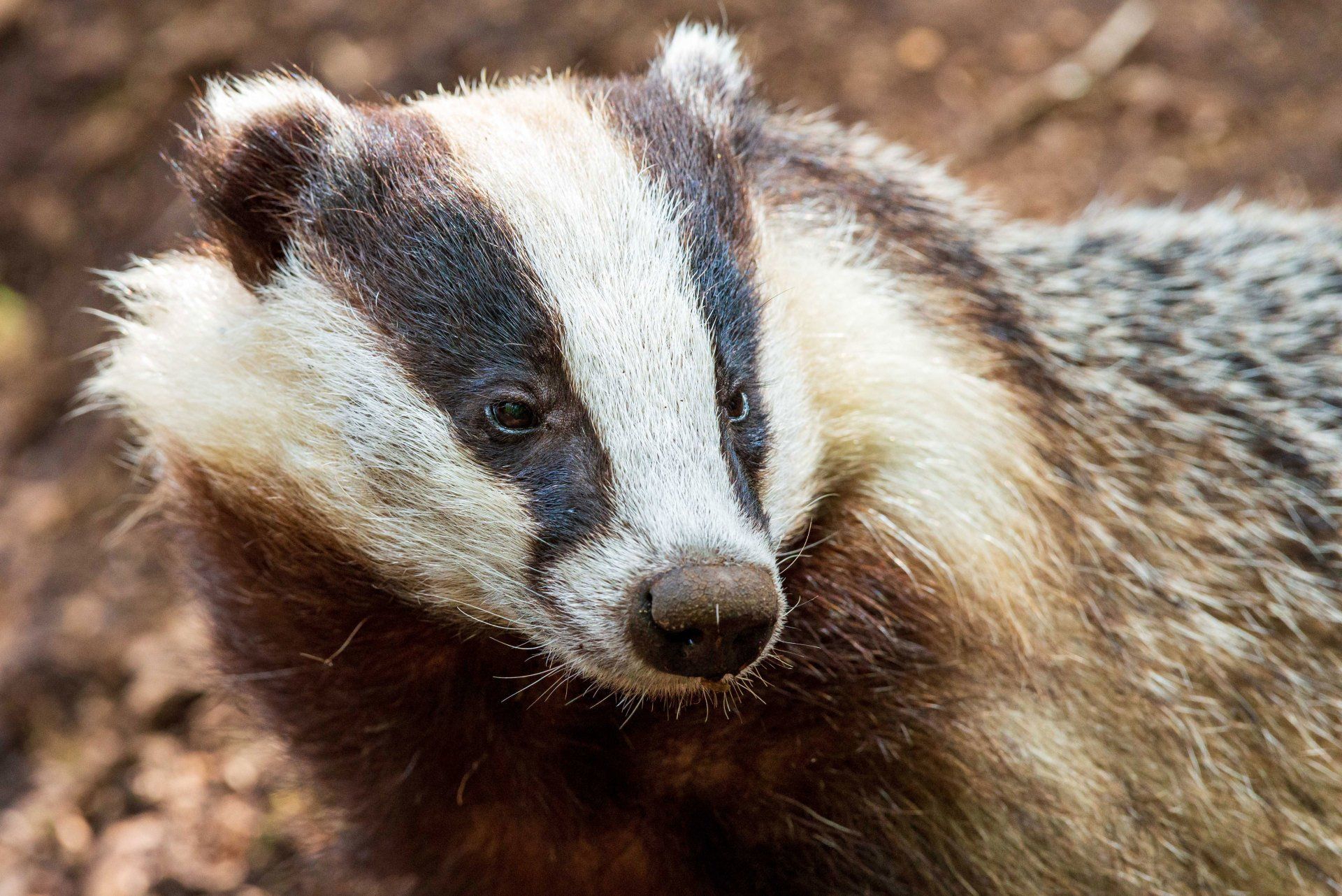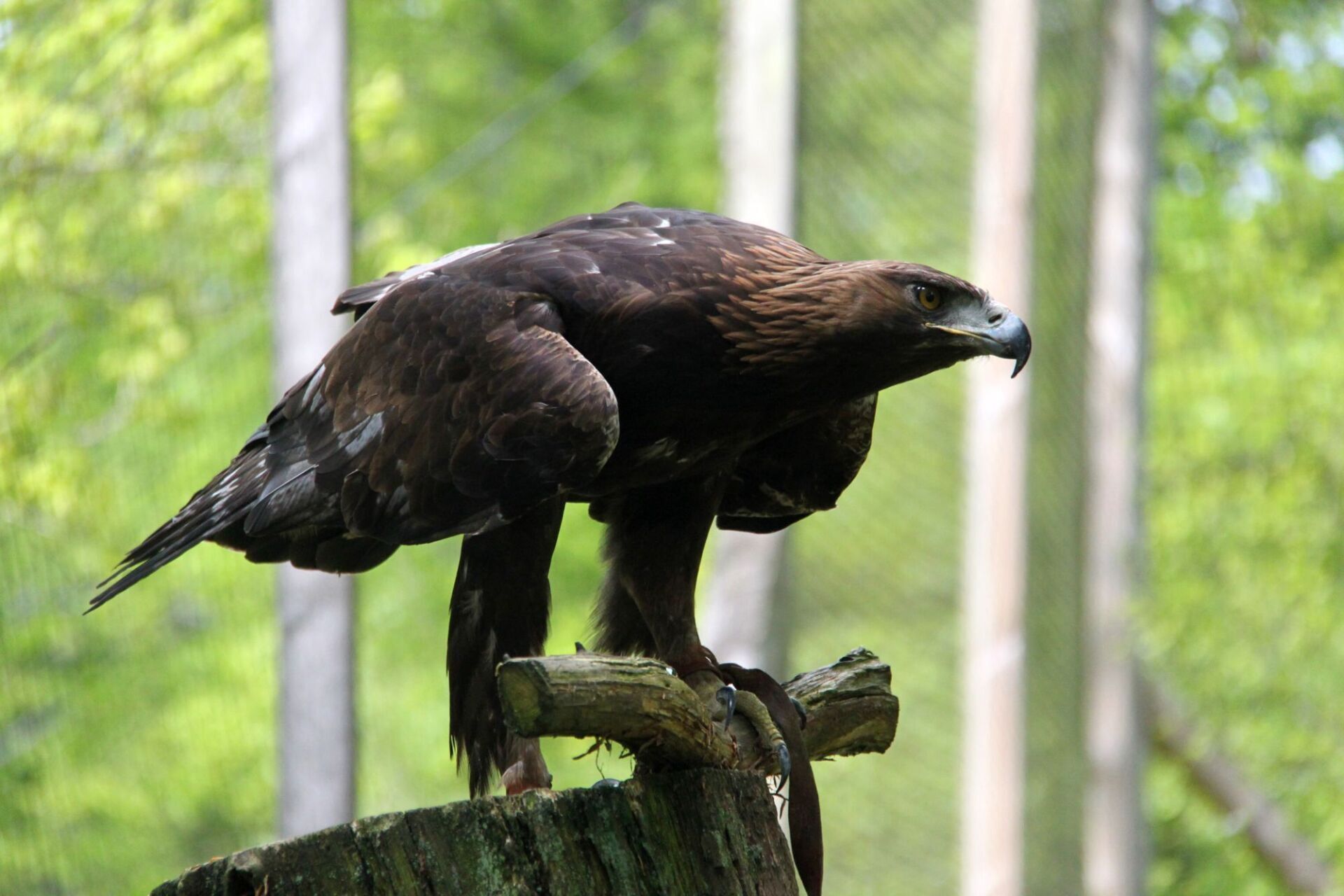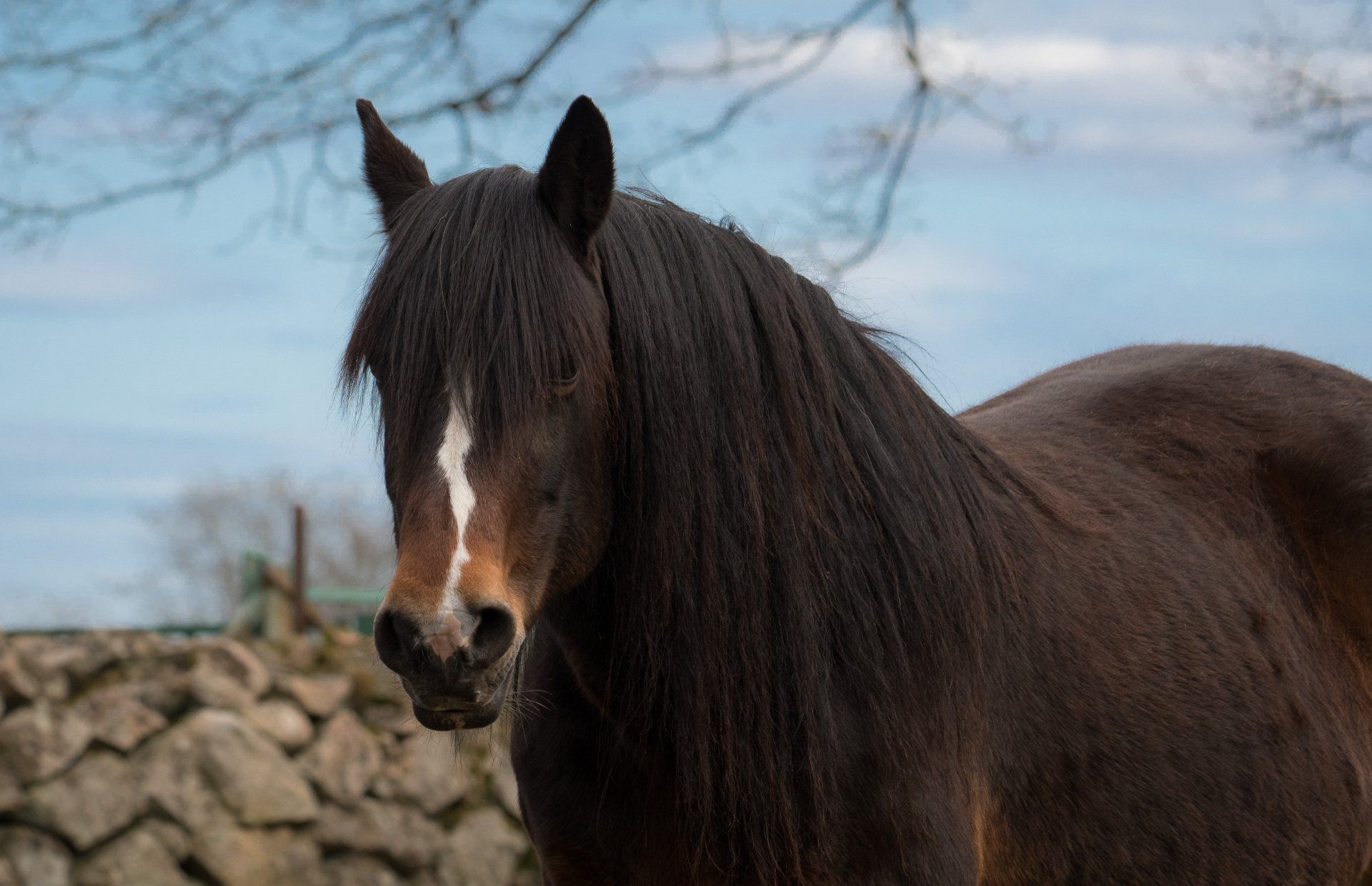FACTS ABOUT MOOSE
Latin name:Alces alces
Order: Pair-toed ungulates
Family: Deer
Weight: Males 400-500 kg, females 300-350 kg
Family: Deer
Weight: Males 400-500 kg, females 300-350 kg
Height at the withers: 175-200 cm
Gestation period: 8 months
Food: Leaves, twigs, grass
Expectancy: 12-15 years
The king of the forest, the moose
To see a moose striding across the fields or in the forest is powerful. You have the best chance of seeing the moose at dawn and dusk. Then the moose are out and moving the most. The elk thrives best where there are both deciduous, mixed and coniferous forests. It lives in the northern parts of Europe, Asia and North America. About 200,000 - 350,000 moose live here in Sweden.
The moose is a skilled swimmer
You may know that the moose is fast on land: it can run short distances at a speed of up to 60 km/h! But did you know that moose are also good swimmers? It is not uncommon to see moose taking a shortcut across a lake. A Swedish moose has even swum all the way over to Denmark!
The stately horns of the moose
The bull moose gets new antlers every year. It loses its horns during the winter, then they start to grow again during the spring and summer. The horns then have "bast skin", which means that the horns are covered with skin that has extra blood vessels. It is to supply the horns with blood so they can grow. When the summer comes to an end, the horns are fully grown. Then the bull moose "sweeps" the bast skin off by rubbing its antlers against trees and the like. On a bull moose with larger horns, the horns can grow as much as 2 cm per day!
The moose's bald spot
On the upper lip, the moose has a small bald spot. It is super sensitive and allows the moose to feel when it is looking for food among grass, twigs and bushes.



